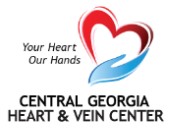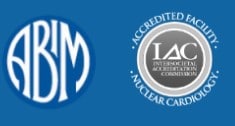Nuclear Stress Test
In an effort to be non-invasive, a nuclear stress test is a diagnostic test we use to evaluate blood flow to the heart. At Central Georgia Heart there are a few kinds of nuclear stress tests that we offer including a PET and SPECT scan which helps us better evaluate heart disease. This non-invasive type of test is performed by injecting a very small amount of a radioactive substance into a patient. Then our Cardiologists in Macon, Ga use a nuclear imaging camera to reveal the areas of the heart that are being deprived of blood.
Myocardial Perfusion Imaging (SPECT & PET)
Myocardial perfusion images are combined with exercise to assess the blood flow to the heart muscle. Exercise is usually in the form of walking on a treadmill. A “chemical” stress test using the drug regadenosine/lexiscan may be performed in patients who are not able to exercise maximally, providing similar information about the heart’s blood flow without walking on a treadmill.
Myocardial perfusion studies can thus identify areas of the heart muscle that have an inadequate blood supply as well as the areas of heart muscle that are scarred from a heart attack. In addition to the localization of the coronary artery with atherosclerosis, myocardial perfusion studies quantify the extent of the heart muscle with a limited blood flow and can also provide information about the pumping function of the heart. Thus, it is superior to routine exercise nuclear stress test and provides the necessary information to help identify which patients are at an increased risk for a heart attack and may be candidates for invasive procedures such as coronary angiography, angioplasty and heart surgery.
How a Nuclear Stress Test is Performed (Cardiac SPECT)
A small amount of a nuclear stress test imaging agent – thallium or sestamibi (Cardiolite) or tetrofosmin (Myoview), is injected into the bloodstream during rest and during exercise or chemical stress. A scanning device (SPECT camera) is used to measure the uptake by the heart of the imaging material. If there is significant blockage of a coronary artery, the heart muscle may not get enough of a blood supply in the setting of exercise or during chemical stress. This decrease in blood flow will be detected by the images.
Then, you will lie on a narrow table that slides into a circular-shaped scanner. You must lie still during test. Too much movement can blur images and cause errors.





